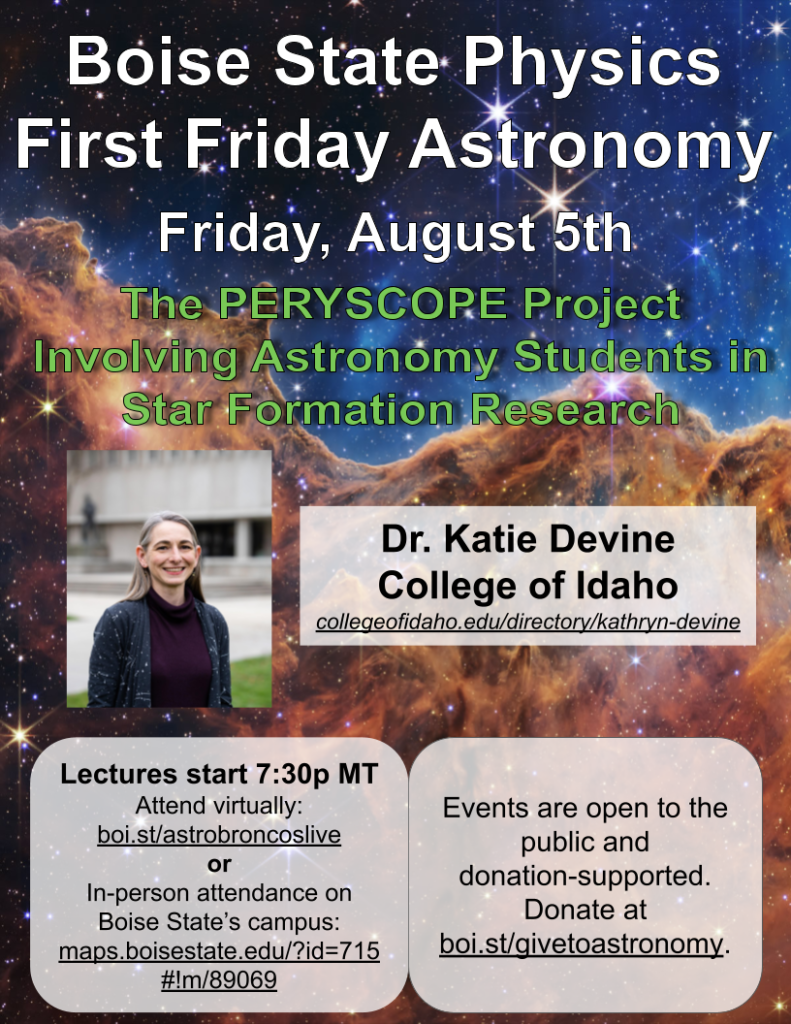Like the musical “Hamilton”, the James Webb Space Telescope lives up to the hype. Already, astronomers have used it to discover galaxies older and more distant than ever before, and it’s only getting started. One of the astronomical processes JWST will elucidate is the formation of stars. Understanding star formation is critical if we want to answer questions about the origin of life on Earth and the possibility for life elsewhere in the universe. But even though scientists have been thinking about star formation since before the word “scientist” existed, some of the most basic questions about the process remain unanswered.
Herschel’s Heavenly Hypothesis
About 4.6 billion years ago, a cloud of dust and hydrogen gas collapsed under its own weight (a collapse catalyzed by a close-by cosmic catastrophe). At the nebula’s central ball, atom piled on atom, crushed by supersonic infall, until Heisenberg made swiss cheese of the electrostatic walls. Hydrogen compressed into other atoms all, and, millions of years after the initial collapse, our Sun began to twinkle.

The idea that stars might evolve through time runs counter to the Platonic ideal of a perfect, unchanging universe but arose, in part, from the diligent labors of William and Caroline Herschel in the mid- to late 18th century. German immigrants to England in a time before “Germany” existed, the brother-sister team conducted some of the first comprehensive astronomical surveys, motivated by William’s conjectures that cycles of growth, decay, and death analogous to “vegetative” cycles operated throughout the universe. He even suggested that the nebulae seen by astronomers throughout the sky showed signs of “condensation” and “compression”.

Our understanding of stellar formation and evolution, rooted in William’s fertile speculations, blossomed in the early and mid-20th century, as Eddington, Einstein, and others uncovered the quantum phenomena that govern the internal combustion engines of stars. A combination of sophisticated theoretical and computational approaches in the mid- and late 20th century allowed astronomers to include even more complex phenomena into their stellar formation models, including magnetic and radiative effects that play subtle but profound roles in, for example, molding the inflows that feed nascent stars.
The Fault in Our Stars
But just as knowing the chemistry of cellular respiration is not enough to understand the evolution of life on Earth, understanding basic stellar formation physics is not enough to understand the process as a whole. We need the equivalent of the fossil record to resolve long-standing mysteries of star formation, but, as for the most ancient of fossils, the earliest phases of star formation are often clouded. One of the longest-standing mysteries: stars take too long to form.
The cosmic clouds of gas and dust that eventually make stars seem to evolve and collapse in only a few million years, but, for some reason, it takes billions of years for these rapid motions to actually make stars. This mismatch in timescales is as if Usain Bolt could run 10 meters per second (20 mph), but it took him three hours to run the 100-meter dash — something must be slowing him down.
Unfortunately, the star formation slow-down processes happen where astronomers can’t see them, and anyone who has ever looked at the Milky Way has seen the cause: dust. The same collapse of gas that forms the nascent star also concentrates dust, which conceals the star-forming core. As a result, astronomers have struggled to understand these obscure, early stages of star formation.
Piercing the Cosmic Veil
Enter the James Webb Space Telescope. As an infrared telescope, JWST allows astronomers to peer through the clouds of dust to unveil numerous cosmic mysteries.
Infrared light has a longer wavelength than visible light (the kind of light we can see with our naked eyes). Consequently, where dust particles are like very tall and narrow speed bumps in the road for visible photons, they are only very fine gravel chips for infrared photons.
Astronomers will use the JWST not only to learn about star formation but also the origin of the universe, itself obscured by ubiquitous dust. Recently, astronomers announced the detection of a galaxy so old it formed only a few hundred million years after the Big Bang.

Want to learn more about star formation? Join Boise State Physics on August 5 at 7:30p MT when we host Prof. Katie Devine to talk about the PERYSCOPE Project and involving astronomy students in star formation research. The presentation will also be live-streamed at boi.st/astrobroncoslive.
